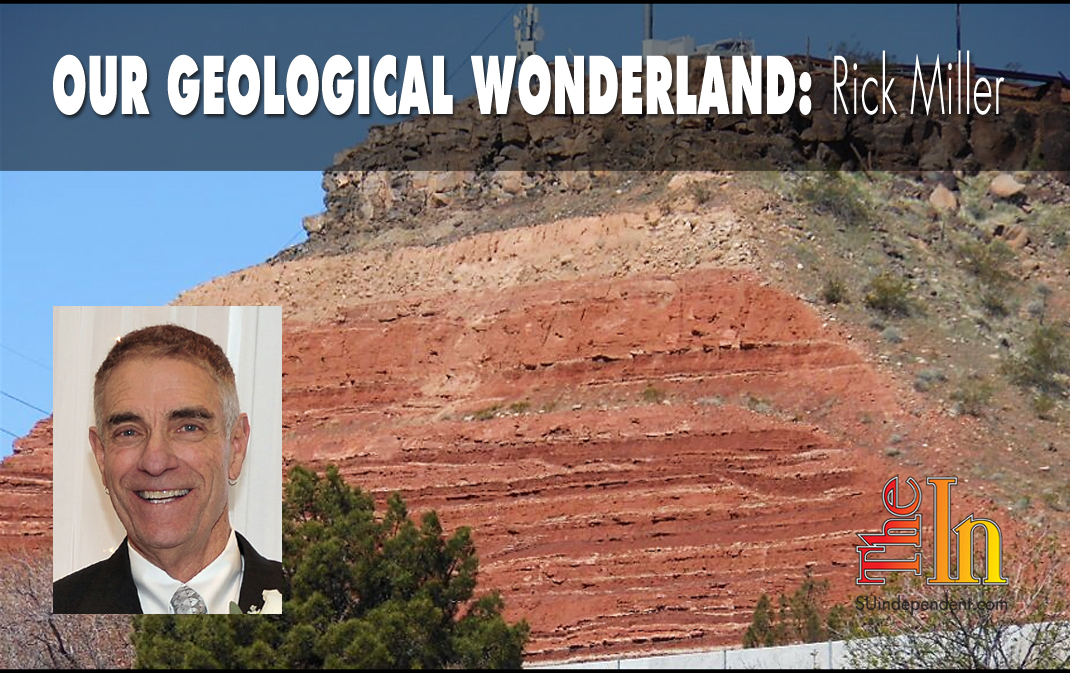 The famous inverted topography of basalt lava ridges of St. George
The famous inverted topography of basalt lava ridges of St. George
Within the city limits of St. George are some nearly flat-topped ridges with an unusual geologic history. These ridges have been given individual names such as Middleton Black Ridge, Old Airport Black Ridge, West Black Ridge, and so on. Each of the ridges is capped by a dark-gray to black rock, which to geologists is known as basalt. To developers and builders, the ridges are great places to build expensive homes, many of which have spectacular views. To lovers of fireworks, the ridges are great places to watch the fireworks shows on July 4 and 24. To geologists, the ridges provide an interesting display of some activities of our dynamic planet such as volcanic activity, weathering, and erosion.
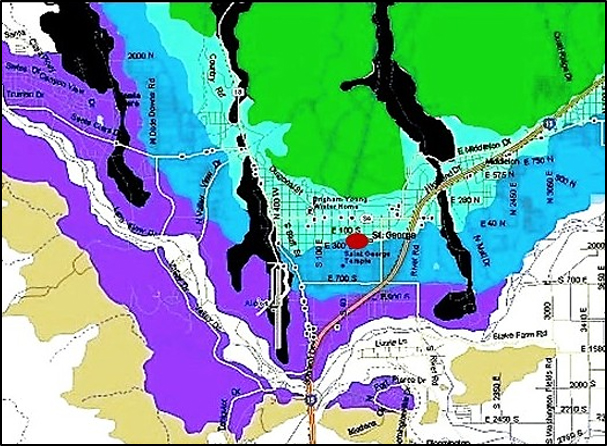
These ridges represent an unusual geologic anomaly and are described in geological publications as basalt lava flows representing inverted topographic features. Two images below provide a comparison of a modern basalt lava flow on Hawaii with an older basalt flow ridge in St George. Clearly, they have a similar sinuous pattern, but the modern flow occurs within a channel. In contrast, the older flow here in St. George (Middleton Black Ridge, north of Interstate 15) seems to have flowed on top of pre-existing rocks to form a ridge. Considering that lava flows are molten liquid, how is it possible that this flow in St. George occurred on top of pre-existing rocks but apparently did not flow down the sides of the ridge?
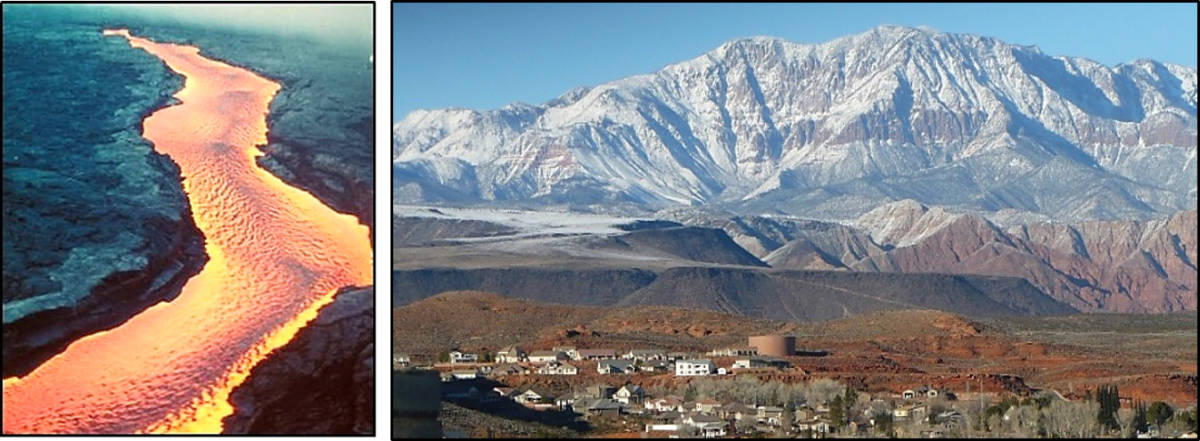
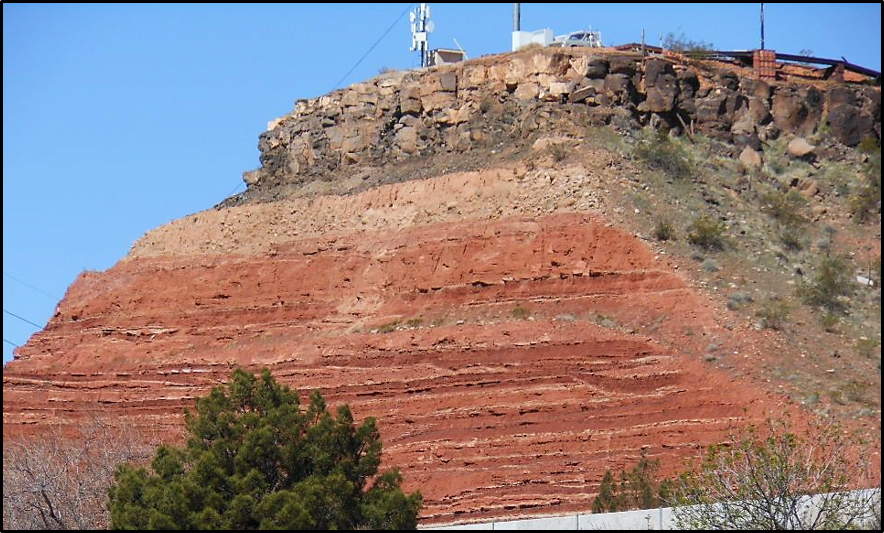
The image below is of Old Airport Black Ridge and West Black Ridge. They exhibit the same apparent anomaly. How could the molten liquid flow along the tops of the ridges but not spill over the edges and flow down the sides?
We could speculate on an answer to this question as follows:
—These ridges represent the remains of ancient highways built by aliens.
—The reason that the lava did not run down the sides of the ridges is due to divine intervention.
—These flows were originally in a gulley or stream valley, but subsequently erosion of the surrounding rocks produced the current inverted appearance.
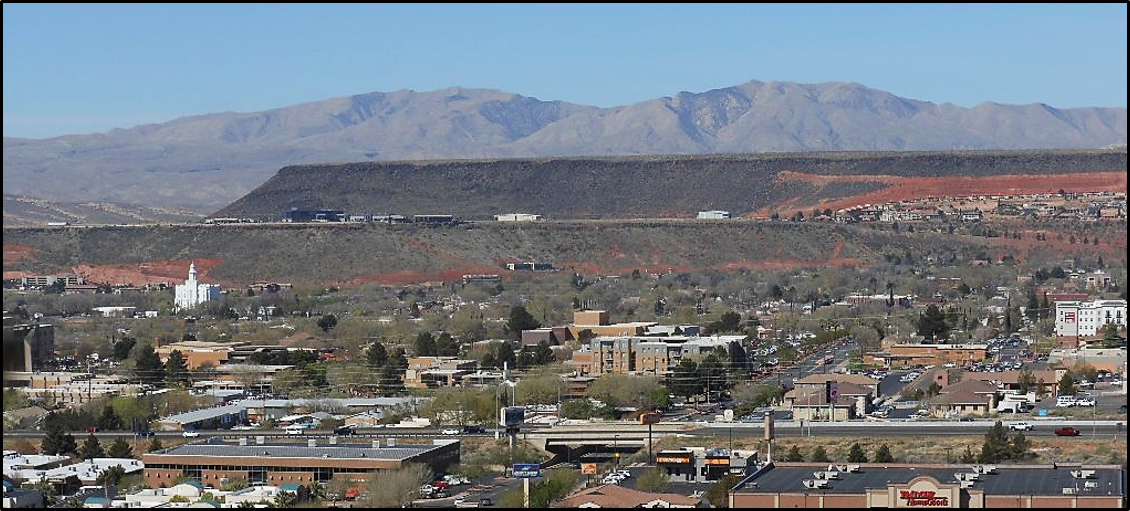
Considering the third hypothesis above, it is known that these flows are part of a fairly extensive volcanic field in and around Washington County, which also includes numerous cinder cones and various other basalt flows. Because these lava flows are a volcanic igneous rock, they can be radiometrically dated. The age of the oldest flows is approximately 2.3 million years, but some of the other volcanic features in the area, such as cinder cones and other lava flows, have formed possibly as recently as 32,000 years ago. As illustrated below, these basalt rocks are distinctive.
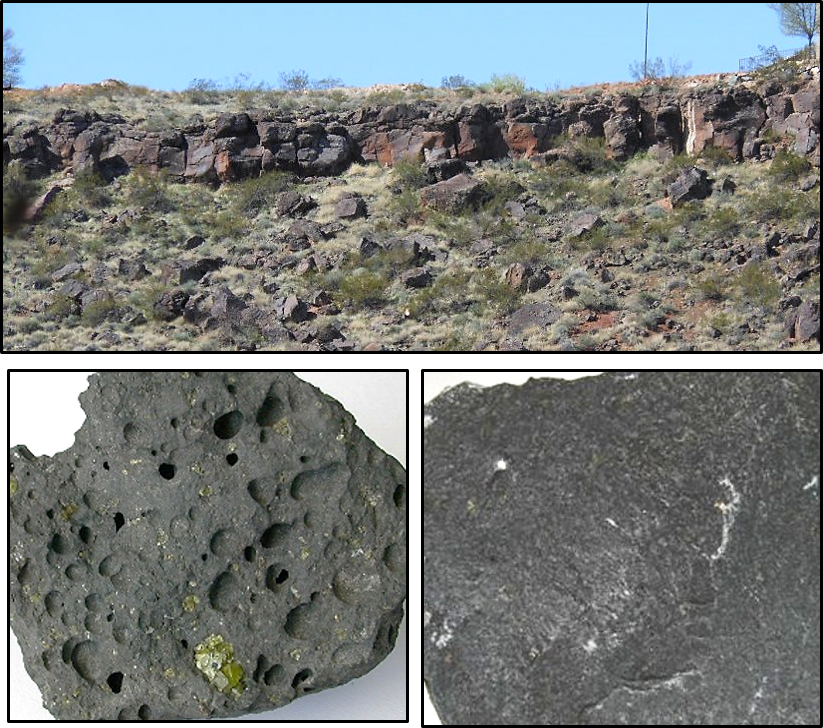
If we consider the geology of where these basalt ridges are located, we find mostly sedimentary rocks that represent a variety of environments such as oceans, lakes, deserts, and wetland forests that existed in this region during an interval of geologic time from the Permian to the Jurassic Periods. This represents a numerical time from about 270 to 190 million years ago. In contrast, we noted that the volcanic rocks have formed very recently in geologic time, mostly within the past 2 million years. Although this area is basically an arid desert environment today, during the ice ages there was more water and were developing stream valleys. The lava flows, which erupted from around the base of Pine Valley Mountain, flowed down slope, and some went into existing galleys or stream channels.
After eruptions and cooling of the flows, the processes of weathering and erosion began their slow but inevitable progress. Because the much older sedimentary rocks are less durable than the basalt, they began to erode away faster than the basalt in the channels. What we see today are basalt flows that were formed in stream channels but now form ridges because the sedimentary rocks making up the original slopes above the channels have been eroded away (see diagrams below). Thus, the term “inverted topography.”
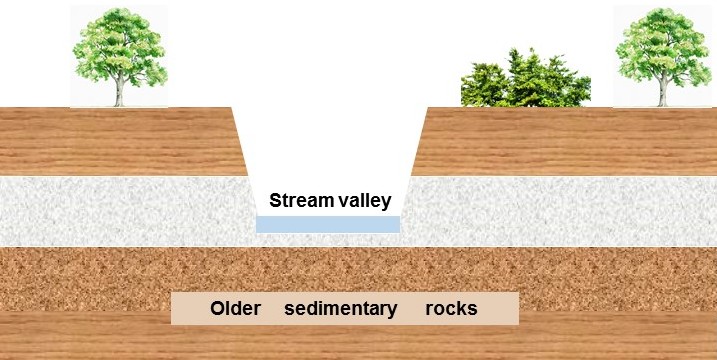
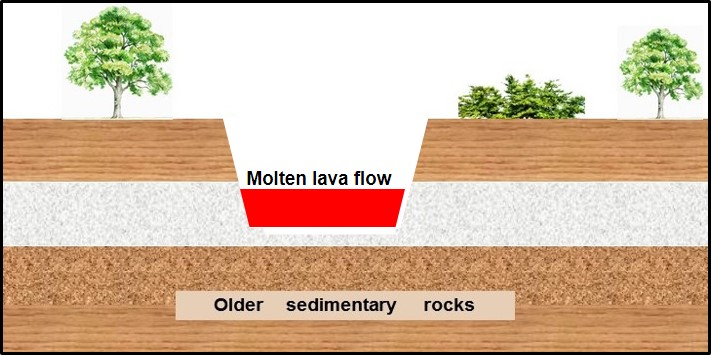
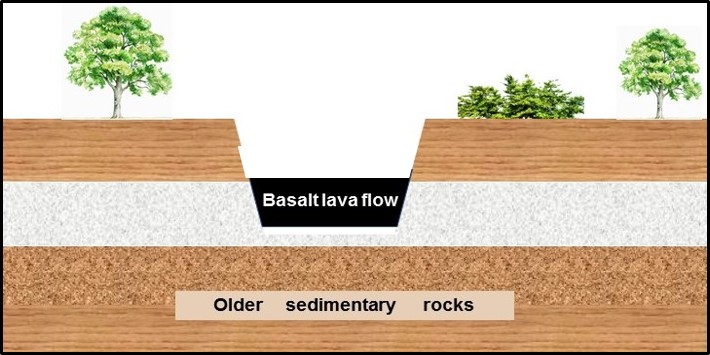
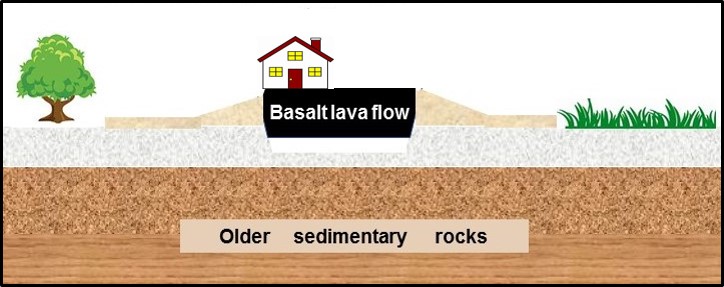
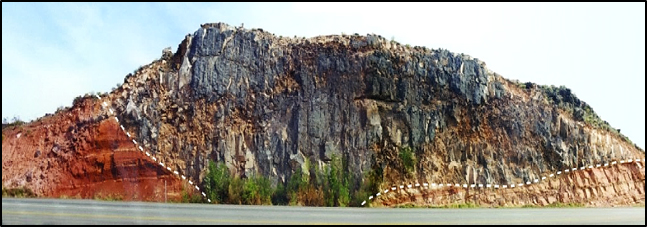
Many thanks to Janice Hayden, full time instructor in physical sciences at DSU.
Articles related to “The famous inverted topography of basalt lava ridges of St. George”
Our Geological Wonderland: The Pine Valley Mountain Laccolith




Awesome! Thanks for sharing your knowledge.
Jon.
Thanks. I appreciate your nice comment.
Rick Miller